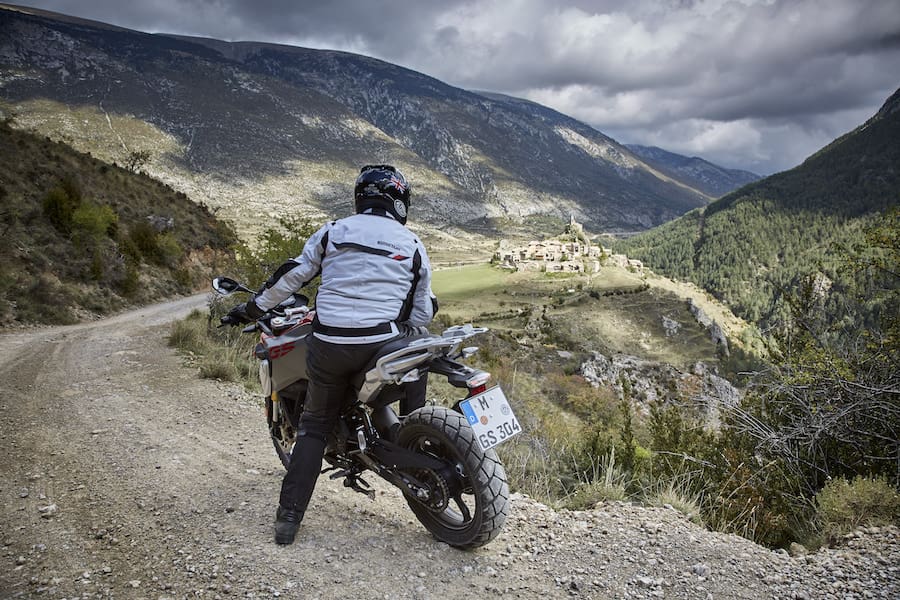BMW Motorrad has begun expanding its range of different models based on the new BMW G310 single-cylinder entry-level platform, which made its marketplace debut last year with the G310R roadster. This represented the first fruits of its partnership with TVS, which manufactures the bikes in India. Perhaps inevitably, next up is
a GS adventure version.
At $6900 (+ ORC), the G310GS is an accessible adventure bike that is very affordable – to customers in developed markets, anyway. In developing regions such as Brazil and Asia, it will be a prestige model with pricing to suit, but any way you look at it, it’s a lot of bike for the money.
BMW is understandably hyper-concerned not to risk devaluing the iconic GS trademark with a badge-engineered 313cc bauble whose primary merit is that it’s cheap. But in creating the new mini-GS based on an Indian-built platform, it has raised the cost-to-performance bar to levels that bikes with three times the capacity and twice as many cylinders might struggle to attain.

We rode the bike in northern Spain for two full days, covering 610km in going from sea level at Barcelona to more than 2300m in altitude to visit the independent principality of Andorra, climbing high up in the Pyrenees Mountains across to France, then back again. That also included some good stretches of off-road riding on a bike that has genuine adventure capability – at least on harder surfaces.
While I’m a fan of street singles, I was a little concerned about climbing the Pyrenees aboard a budget-priced single-cylinder street enduro made in India with just a 313cc engine. But after riding the G310GS hard and long for two full days in challenging conditions, I was much impressed with its all-round capability.
The mini-GS has the same engine as the G310R and delivers an identical 25kW at 9500rpm and 28Nm at 7500 rpm, but it’s 11kg heavier at 169.5kg fully loaded with 11 litres of fuel. The tubular steel chassis is the same too, although the GS has a greater sense of substance than the R model, and its seat is 50mm taller, thanks partly to the longer-travel suspension. A selection of dealer-fit seats can lower or lift the riding position, and the 15mm-lower one could be more comfortable for female riders, who are a key market target.
The tall stance delivers a spacious riding position, thanks also to a broader, flatter one-piece handlebar mounted on 60mm risers, and lower-mounted footrests – which are not low enough to become an issue in terms of ground clearance. This bike is sure to become a favourite with couriers and anyone else who has to ride in cities, not just because it’s cheap to buy and economical to run – claimed fuel consumption is the same as the G310R at 3.3L/100km – but there’s a massively sturdy cast luggage rack fitted as standard and the taller stance lets you see ahead over car roofs. Together with a cleverly designed, well-sculpted dual seat and the complete absence of vibration from the little DOHC four-valve engine, this made the G310GS improbably comfy on an all-day ride.
The engine’s single gear-driven counterbalancer does its job to perfection; the Ducati Supermono I used to race was the smoothest single I’d ever ridden, but the much less costly G310GS matches that, even at higher rpm. There are no vibes at all,zilch – not through footrests, seat or handlebar, even when approaching the 10,500rpm limiter.
One downside of the small-capacity motor is that you do need to rev it pretty hard to build up speed. It’s quite happy to plonk along slowly in traffic or sightseeing, but for any sort of acceleration you must keep the revs up above 6000rpm. Doing that entails using the gearbox quite hard, but the bike has really good ratios, as well as a clean, precise shift action and a light clutch. BMW has definitely improved this on the GS compared to the R bikes, and the shift action is now Japanese quality. This makes it no hardship riding the little BMW in traffic or on narrow, densely packed streets.
Read the full review in the current issue of AMCN (Vol 67 No 10) on sale now












